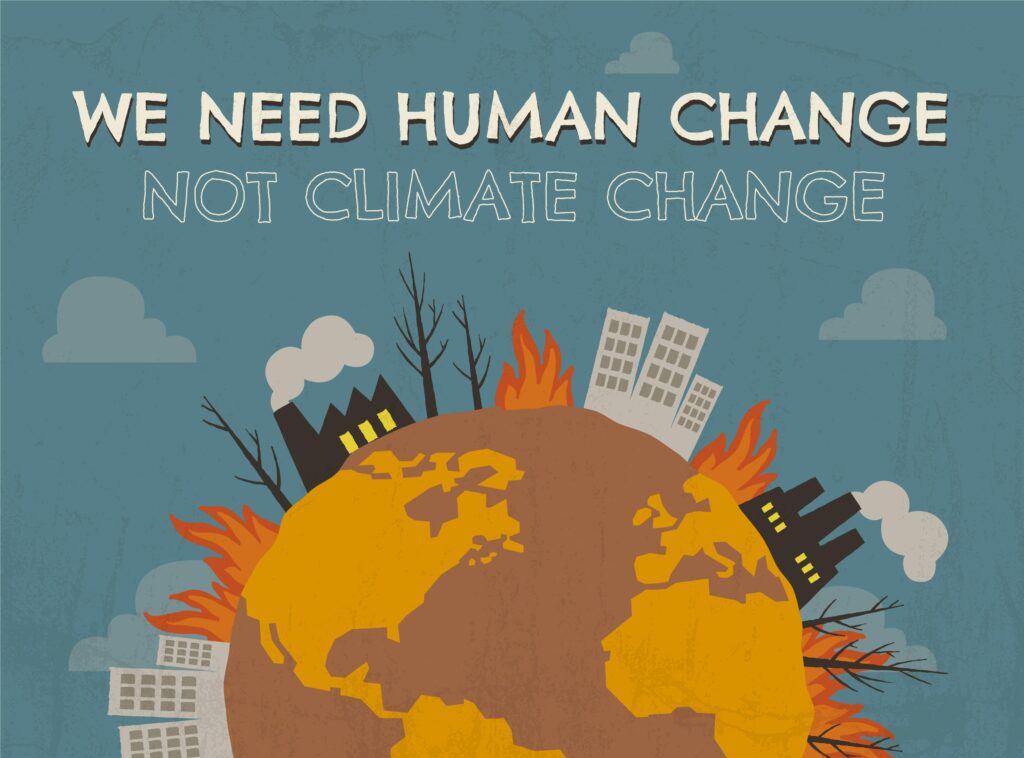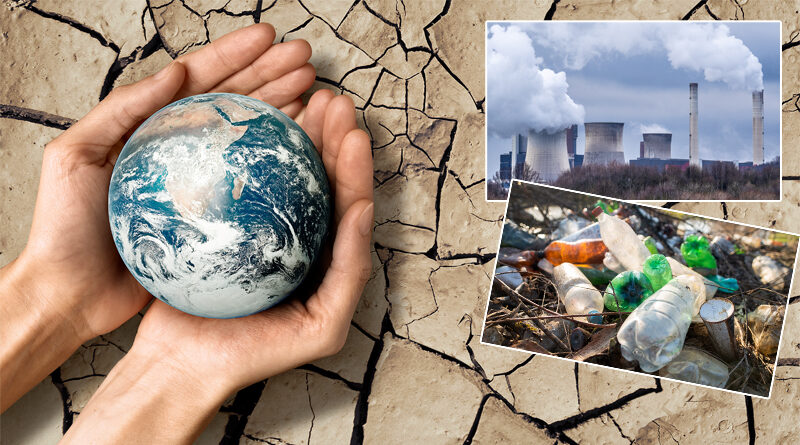Climate Crisis: What are we doing wrong?
By: Diana Bello Aristizabal
“If the solution to the climate crisis was about changing tea bags for loose tea leaves and be vegetarian once a week, then we wouldn’t have a crisis,” said Greta Thunberg, an environmental activist, regarding a problem that has the planet in check and demands radical actions, not to reverse the damage done but to avoid a climatic catastrophe on earth, our home and that of all species.
For this reason, this April, which celebrates Earth Day on the 22nd, instead of “wearing green” on social media with messages alluding to caring for the environment, let’s reflect on how we can come together to repair this house that has been asking for decades to protect it, even though we insist on harming it.
Our mother earth began to beg for help in the 70s by increasing its temperature while scientists warned that we didn’t have the ability to adapt to that reality. Today, with the UN Intergovernmental Panel on Climate Change’s synthesis report (March 2023), it is known that the rate of temperature increase in the last half century has been the highest in 2,000 years.
This is not hard to believe if we take as a reference what has been experienced in Florida so far in 2023. During the first days of February, record temperatures close to 85ºF were reached in some areas of Miami-Dade and Broward, which is above what has been seen in other years for the same month.
As a result, a drought occurred in March in some parts, particularly inland Palm Beach County and the center of the state, including the southwest coast and the Orlando area. In Miami-Dade, some sectors showed abnormally dry to moderate conditions.
 “We are approaching critical levels of increase in global temperatures,” warned the consultant, environmental engineer and science professor, Carlota Sarmiento D’costa, on this issue.
“We are approaching critical levels of increase in global temperatures,” warned the consultant, environmental engineer and science professor, Carlota Sarmiento D’costa, on this issue.
This point of view matches with that of Joanne Pérodin, Senior Director of Climate Equity at The Cleo Institute, non-profit organization dedicated to educate about the climate crisis, who points out that according to predictions we will have more days of extreme heat with temperatures above 90ºF for several consecutive hours not only in Florida but in other parts of the United States.
What is more concerning is that in 10 years, we will see even more alarming levels in this part of the world. Based on data from First Street Foundation, scientists predict that Miami-Dade will experience a heat index of 103 degrees for 34 days a year by 2033.
All this scenario supposes an increase in the sea level, a risk for the water reserves in the subsoil, changes in the behavior of animals, more frequent and devastating hurricanes, more droughts, losses in agricultural production, health problems and even an impact on the economy of families that pay higher electricity bills due to the excessive use of air conditioning.
Regarding changes in the behavior of animals, the dry air and high temperatures, which are increasingly out of the normal parameters for South Florida, have caused them to modify their migration patterns.
“Animals don’t want to be here because their internal mechanism is telling them that this is not the right place for them in terms of temperature and humidity. As a result, they don’t stop when reaching this area, and many get tired in the middle of the ocean and die,” explains Sarmiento D’costa.
And the threat is also for our human species during the hurricane season, which, although traditionally begins on June 1st and runs until November 30th this year, it is possible to start on May 15.
“Given that in recent years the National Oceanic and Atmospheric Administration (NOAA) and other institutions involved in weather forecasting have seen storms coming from the Atlantic form well before June, this year an extension of the season is being considered,” says the expert from The Cleo Institute.
A generation infected with Wi-Fi
Judging by the experts’ predictions, our house is on fire, and the consequences are becoming more serious every day. But what are we doing from the comfort of our home besides complaining about high temperatures and blaming governments and big corporations for the climate crisis?
“The current generation (known as Z) has not been infected by practicing environmental activism like others have. Their biggest threat is not to die from global warming but to have their cell phone’s battery die or to be left without Wi-Fi because nothing can be worse than a week without a mobile device,” says Carlota.
The funny thing is that if we continue down the same road, we would experience power outages that would make screens, to which we have become so accustomed and on which we depend for almost everything, useless.
 For this reason, the first step is to change our mentality so that we participate in decision making that affect us all and change our habits even if we feel a little uncomfortable.
For this reason, the first step is to change our mentality so that we participate in decision making that affect us all and change our habits even if we feel a little uncomfortable.
For example, it is known that the expansion of the urban border, that is, the construction of all types of infrastructure, is altering the natural function of aquifers, such as swamps, which act as a protection plug in soil saturation, managing to regulate the sea level rise and serving as a fan against extreme humidity.
This happens because the planning of these projects does not contemplate the environmental impact they can create. Despite this, there is not enough pressure on decision makers, nor is it common for people to organize to make opposition. “Today, being active at the polls as a citizen is essential,” says the environmental engineer.
Pérodin agrees with this opinion, stating that the only way in which the government and corporations would take the climate crisis seriously and the implications of, for example, extracting resources such as oil, an important source of greenhouse gases, is with pressure.
“For this to happen, people have to educate themselves about what is contributing to the climate crisis and what solutions can be brought to the table.” For example, knowing that alternative energy sources are much more eco-friendly because they release fewer chemicals, such as solar panels or electric cars.
But according to Sarmiento D’costa, education begins at home with responsible parents raising environmentally conscious children. “It is essential that we go back to what our parents used to tell us: Close the tap when brushing your teeth, turn off the lights, don’t waste water, don’t throw garbage on the ground, don’t use plastic straws and opt for a reusable bottle.”
Of course, adults must first set an example. Perhaps unknowingly, many of us have convenient habits that threaten the environment, such as using plastic, driving conventional and non-electric vehicles, or using abrasive products such as aerosols.
The problem with plastic, which is considered the biggest pollutant on the planet, and with other non-organic waste that we discard daily is that it ends up in a plant where it is incinerated. This process releases chemicals that remain in the environment and, over time, contribute to the climate crisis.
The solution to this problem would be to recycle or reuse everything we consume as much as possible, choose glass containers or other biodegradable products, and shop with cloth bags. “Although there is no culture around recycling in Miami, we can get together with our neighbors and, in turns take everyone’s waste to recycling plants,” advises Carlota.
Other recommendations include pumping gas at night because, during the day, high temperatures help to evaporate gasoline creating more waste; making sure our tires are well inflated to prevent them from making more effort when moving and, therefore, spending more gas; and reducing meat consumption since agricultural activity also produces greenhouse gases.
“The climate crisis affects all of us individually in one way or another. For this reason, it is urgent to have a conversation with our neighbors and loved ones on the matter and to engage with organizations that are working on climate action,” concludes the expert from The Cleo Institute.
What is being done at Miami-Dade County?
One of the reasons some areas of the county are so hot is because they have low tree canopy. When high, as it happens in cities such as Coral Gables, they absorb high temperatures, helping us stay cool.
For this reason, Miami-Dade Mayor Daniella Levine Cava proposed to grow the county’s tree canopy by 30 percent by 2030, this being her main strategy to combat the climate crisis.
This initiative aims to benefit areas that have already been identified as the most problematic, such as Opa-Locka, Brownsville, Gladeview, West Perrine, Naranja, West Little River, Goulds, Pinewood, Westview, and Hialeah, among others, according to data from the organization People Acting for Community Together (PACT).
To accomplish this, the county received $1.5 million in funding to restore and maintain trees and $2.5 million from the Board of County Commissioners for new tree planting.
In addition, it created the ‘Adopt-a-tree’ program, through which families who so wish can receive up to two free trees each year.


Pingback: Fifty five percent of Florida is under severe drought conditions
Like most articles here about 20 people alone from my job read it but no one comments .
Good article but problem with ” Going Green ” is that as of right now EV is not nearly as efficient as gas .
A silly example but my own experience is I have an electric lawn mower which has the latest batteries , it takes about 6 hours to charge them .
If the temp is roughly 90 degrees plus the batteries conk out in half the time .
People will ” Go Green ” if same price and as efficient but that is still not the case .
Again the article is great and yes temps are becoming insane and this is coming from someone who mows his lawn at 95 degrees during summer , lol but no fan of EV as of today as simply not efficient in cold and hot weather .
” One of the reasons some areas of the county are so hot is because they have low tree canopy. When high, as it happens in cities such as Coral Gables, they absorb high temperatures, helping us stay cool.”
Doral is sadly OWNED by developers and grass / tree’s being replaced with cement .
” reducing meat consumption since agricultural activity also produces greenhouse gases”
Last thing we need are farmers to now sell off the farms to factories , etc .
================================
” Their biggest threat is not to die from global warming but to have their cell phone’s battery die or to be left without Wi-Fi because nothing can be worse than a week without a mobile device,” says Carlota.”
Lol that was good .
These are some of my observations , jokes —
Miami beach is the only beach I have gone to where there are people waist deep in water texting and taking selfies .
Not unusual to go to an eatery here in Miami and both parents and their kids are sitting at the table and texting , looking at videos .
This one I made up but it reflects Miami —-
I was at a wedding not long ago here in Miami and the Groom and Bride were actually texting during the ceremony .